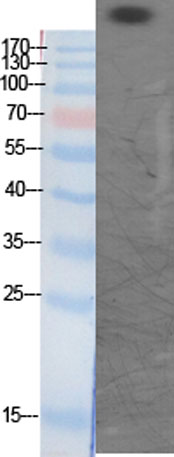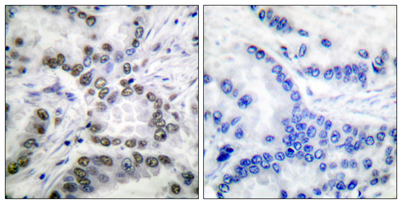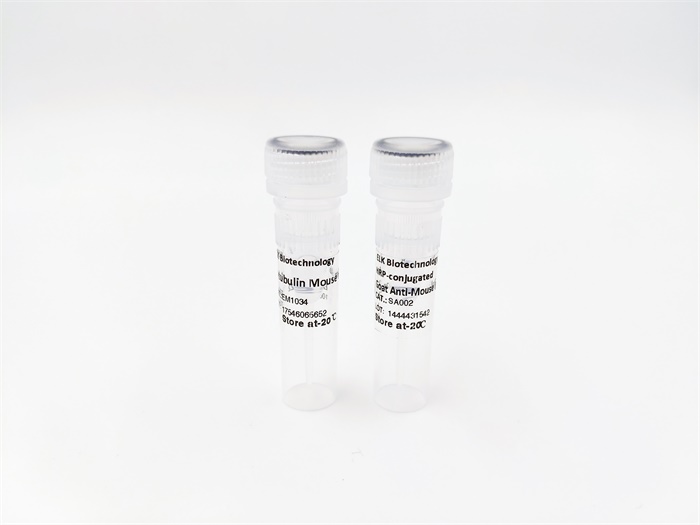| Product name: |
CBP (Acetyl Lys1535) rabbit pAb |
| Reactivity: |
Human;Mouse;Rat |
| Alternative Names: |
CREBBP; CBP; CREB-binding protein |
| Source: |
Rabbit |
| Dilutions: |
Western Blot: 1/500 - 1/2000. Immunohistochemistry: 1/100 - 1/300. ELISA: 1/20000. Not yet tested in other applications. |
| Immunogen: |
The antiserum was produced against synthesized peptide derived from human CBP around the acetylated site of Lys1535. AA range:1501-1550 |
| Storage: |
-20°C/1 year |
| Clonality: |
Polyclonal |
| Isotype: |
IgG |
| Concentration: |
1 mg/ml |
| Observed Band: |
265kD |
| GeneID: |
1387 |
| Human Swiss-Prot No: |
Q92793 |
| Cellular localization: |
Cytoplasm. Nucleus. Recruited to nuclear bodies by SS18L1/CREST. In the presence of ALX1 relocalizes from the cytoplasm to the nucleus. |
| Background: |
This gene is ubiquitously expressed and is involved in the transcriptional coactivation of many different transcription factors. First isolated as a nuclear protein that binds to cAMP-response element binding protein (CREB), this gene is now known to play critical roles in embryonic development, growth control, and homeostasis by coupling chromatin remodeling to transcription factor recognition. The protein encoded by this gene has intrinsic histone acetyltransferase activity and also acts as a scaffold to stabilize additional protein interactions with the transcription complex. This protein acetylates both histone and non-histone proteins. This protein shares regions of very high sequence similarity with protein p300 in its bromodomain, cysteine-histidine-rich regions, and histone acetyltransferase domain. Mutations in this gene cause Rubinstein-Taybi syndrome (RTS). Chromosomal translocations invo |




 Western Blot analysis of MCF-7 cells using Acetyl-CBP (K1535) Polyclonal Antibody diluted at 1:1000. Secondary antibody(catalog#:RS0002) was diluted at 1:20000
Western Blot analysis of MCF-7 cells using Acetyl-CBP (K1535) Polyclonal Antibody diluted at 1:1000. Secondary antibody(catalog#:RS0002) was diluted at 1:20000 Immunohistochemistry analysis of paraffin-embedded human lung carcinoma tissue, using CBP (Acetyl-Lys1535) Antibody. The picture on the right is blocked with the synthesized peptide.
Immunohistochemistry analysis of paraffin-embedded human lung carcinoma tissue, using CBP (Acetyl-Lys1535) Antibody. The picture on the right is blocked with the synthesized peptide.在線咨詢
技術(shù)支持



 下載說明 ①
下載說明 ①



